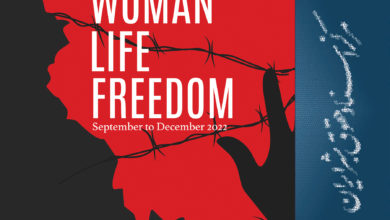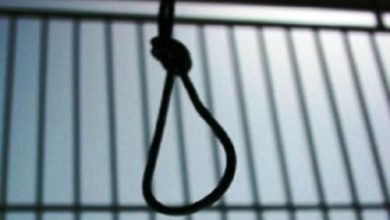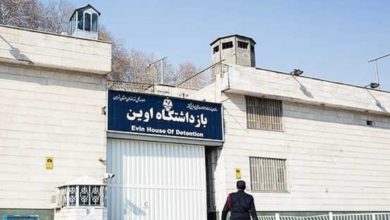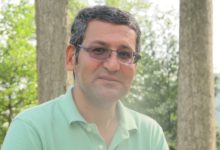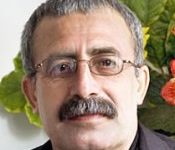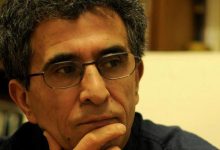Witness Statement of Hamed Saati
Name: Hamed Saati
Place of Birth: Sanandaj, Iran
Date of Birth: 1951
Occupation: Taxi Driver
Interviewing Organization: Iran Human Rights Documentation Center (IHRDC)
Date of Interview: February 12, 2011
Interviewer: IHRDC Staff
This statement was prepared pursuant to an interview with Hamed Saati. It was approved by Hamed Saati on February 12, 2011. There are 13 paragraphs in the statement.
The views and opinions of the witness expressed herein do not necessarily reflect those of the Iran Human Rights Documentation Center.
1. My name is Hamed Saati. I am 59 years old and live in Stockholm. I work as a taxi driver. I left Iran in 1985 because I was wanted by the Islamic Republic for opposition to the government and for the work that I did during the time of the Shah. In 1983, my younger brother Hamid was executed by the IRI.[1]
2. When the Islamic Republic came to power, the biggest point of dispute between Kurdish people and the Iranian government was that the people of Kurdistan boycotted the 1979 referendum.[2] In effect, the boycott was the position of ninety-nine percent of the Kurdish people. Therefore, the government could pursue everyone who was a Kurd.
3. During those days, I was a teacher in the villages and helped people. Later, the authorities mentioned this in my file and claimed that I was a communist and for that reason I had chosen to work in the villages. When the Islamic Republic attacked Kurdistan, I was fired in absentia from my teaching job. It was 1980. I am from Sanandaj but I taught in the villages of Saqqez. During that time, I was not a member of any party and was only a teacher.
Arrest
4. Although I was not arrested during the time of the Shah, I was [arrested] after the formation of the Islamic Republic. It was 1979 and my arrest was in response to the reactionaries in the area. During that time, no one in Kurdistan had yet been arrested as political prisoners. The reason for my arrest was the conspiring of a few of the Mullahs. Local Komiteh, comprised of the supporters of the IRI, arrested me at the village where I taught. At that time, no one dared arrest a political person in Kurdistan. They thought that because the Islamic Republic had come to power, they could take action against those seeking freedom.
5. I was arrested on April 2, 1979. The charges against me were that I had disrupted the ballot boxes in Saqqez although on the day of the election, I was in Sanandaj. They surrounded the school I taught at. One of the village residents came and said, “Mr. Teacher! Come out. They have business with you.” I came out and asked what their business was. They said that they wanted to arrest me. I pointed out that I was a government employee and that without permission from my place of employment, they could not take me anywhere. However, they insisted and said that it would be better if they don’t have to use force. The clergy of that village was a crazy individual. He was very insistent that I be taken away. Later on when I became a peshmerga[3] and returned to that village, I never brought up the issue with him.
6. They took me to a village in the center of the rural sector called “Mireh Deh.” I protested my arrest and the official in charge of the sector said that he cannot keep me there so he suggested that I be handed over to the Friday prayer Imam of Saqqez. The Friday prayer Imam of Saqqez cursed at me and said, “Was it you who propagated communism among the people every night until 2 am? Throw him into the jail and inquire after a week to see if he still remembers his name!” However, the whole ordeal did not last more than one hour because people started a riot and wanted to depose the Friday prayer Imam. Even the head of the prison and 2-3 prison employees submitted their resignation and were not willing to imprison me.
7. I was released and returned to the village where I worked to continue my work as a teacher. When the Islamic Republic attacked Kurdistan, I was in Saqqez. The Islamic Republic attack on Kurdistan was initiated on August 19, 1979, but it was defeated soon thereafter. When the army tried to enter the city of Saqqez, they fired 7-8 artillery shells into the city. It was very strange for me that they were willing to fire upon the houses of civilians. The army entered the city and Khalkhali[4] arrived. Between 28 and 36 people were arrested and executed. These people were not political and had done nothing. Some of them were even members of the Maktab-e Koran.[5]
8. When they were arrested and taken to the military base, a large number of people gathered in front of the prison to demand their release. There were two officers by the names of Bazergani and Fakhrai. They promised people that nothing bad would happen. Khalkhali even swore on the Quran that they will not execute the arrested guys. Then they asked that only the immediate family remain behind. When the others left, they shot those who were arrested by the firing squad and said to their relatives, “Go inside and watch them die.”
9. It did not take but 2-3 months for the Islamic Republic to gain control over the whole of Kurdistan. I was a teacher until the second war on Kurdistan. At that time, the Ministry of Education told me that I was considered an enemy of God and it would be better if I did not return to my work. I was able to stay in Saqqez for another year and half. After that, they surrounded my house and I fled. Then after that, they surrounded the houses where I was staying at a few times but I was able to flee. Eventually, I was forced to go to the free region of Kurdistan that was under the control of the peshmerga. I collaborated with the Komala Party since 1980. I was a pre-member for six years and then became a member.
Execution of Younger Brother
10. My brother’s name was Hamid. He was born in 1960 and was 20 years of age at the time of his execution. He was arrested two times. The first time was in the fall of 1979. He had a BB gun during the time of the Shah and had taken 2-3 pictures with that gun. After he was arrested, they searched the whole house and found these pictures and insisted that this was a weapon and he was armed. Hamid had insisted that this was a BB gun. They took him to Kermanshah and tortured him badly. At that time, he was so young that they allowed him to take the daily food to the women’s ward. Eventually, he was released. At that time, the Islamic Republic was under a lot of pressure. The second time he was arrested was 1983. He was subjected to a great deal of torture. His visitors said that during the visit he was standing so that they could only see half of his face because the other half was injured and he didn’t want them to see it and become upset. A man by the name of Bahmani had become hostile towards Hamid because he had shown resistance in prison. He clearly told my family that Hamid would be executed. About ten days later, he was executed. They did not tell us the exact date of the execution or give us his body.
11. In May 1983, the peshmerga forces that I had joined left Mahabad. We entered the free region. At that time, I was sitting in a tent when a person arrived and gave me the news of Hamid’s execution and that of a friend by the name of Omar Feizi. I think the news had reached my family about five days prior. My assumption is that they shot my brother by firing squad. Of course, this is unknown to us because no one saw the body. They had told us that he was buried in Lanatabad in Kermanshah. Of course, we do not know for certain because they did not show us his grave. Hamid was in the prison of Sanandaj. At the time, only my sister was in Sanandaj.
12. Around 1985-86, they arrested my nephew for the crime of supporting the Mujahedin-e Khalq (MEK).[6] He was imprisoned for seven years. At that time, he was only 20 or so years of age and was not a supporter of the Mujahedin-e Khalq. Although he had not done anything, he was tried and sentenced to life imprisonment. My sister tried very hard and was finally able to save him
13. I left Iran because I had twice escaped the Islamic Republic and had then become a peshmerga. My work was teaching social and legal issues to the villagers. I had a weapon and, if forced, would use it. However, I don’t think that I ever used my weapon.
[1] Hamid Saati was executed on August 3, 1982. No information is available as to the verdict that lead to his execution. See One Person’s Story: Hamid Sa’ati, Human Rights & Democracy for Iran (last visited June 27, 2014), http://www.iranrights.org/memorial/story/61861/hamid-saati.
[2] The 1979 referendum on creating an Islamic Republic gave voters only two options by asking, “Islamic Republic: yes or no.” Some groups boycotted the referendum due to its wording and lack of choice. However, officials later claimed it was approved by 99% of voters.
[3] Peshmerga, sometimes spelled peshmerge, is a term used by Kurds since the start of the Kurdish independence movement in the 1920s that literally means “those who face death”. The term is used quite broadly—the definition ranges in definition from Kurdish fighters to simply any civilian that is a supporter and defender of Kurdish civil and political rights.
[4] Mohammed Sadegh Khalkhali was a Sh’ia cleric and served as the first Chief Justice of the Islamic Revolutionary Court. Known as the “hanging judge,” he was responsible for sentencing hundreds if not thousands of people to death.
[5] Maktab-e Koran is a Kurdish Sunni group founded by Ahmad Moftizadeh in 1978 and is currently outlawed in Iran.
[6] The Mujahedin-e Khalq is a leftist revolutionary organization founded in 1965 that participated in Iran’s 1979 Revolution. However, after the Revolution, conflict ensued between the Mujahedin and Ayatollah Khomeini. The group currently advocates the overthrow of the Islamic Republic.


